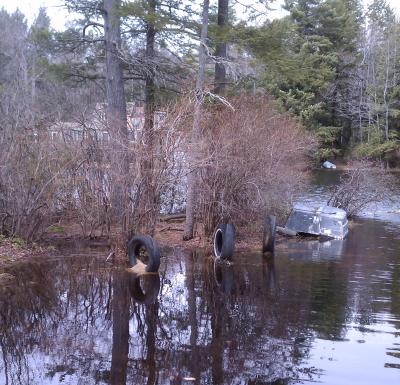The town lowers the dam at the outlet of the lake in mid-October for a couple of reasons. The lower water levels allows people to make repairs on the shore line. More importantly, though, the lowered water lets the ice freeze to the lake bottom, killing the roots of the weeds. We do need to apply treatment to aid further in weed control, but we need it a lot less than in years past.
The dam has gone through several iterations in its lifetime. In the 19th century, the lake was pretty much a meadow with a small spring-fed pond in the middle. At dam was added to let the water rise and be more useful for a mill further downstream.
When I was a child, the level in the fall was such that you could almost walk all the way around the lake on the shore. Several boards were inserted in the spring and removed in the fall as needed. The Dam Committee, consisting of nearby owners, controlled the boards. Sometimes there were disagreements, and boards would go missing.
In the 20-teens, the dam was crumbling. A series of fortunate events led to the construction of a new concrete frame and modern dam. State and town money funded the project. The dam has a lock. The town DPW has a key. Another is held by one of the former Dam Committee members, but the task is the town’s responsibility.
People bring their boats to the boat launch at the south end of the lake and take them out for winter storage. We saw a few zipping around this weekend, enjoying that last fun ride. The small boats, used mostly for fishing, will be back in late March or early April, once the ice is gone and lake is full.
Soon, the lake will be quiet. A few kayakers will make the rounds of the increasingly chilly waters.
